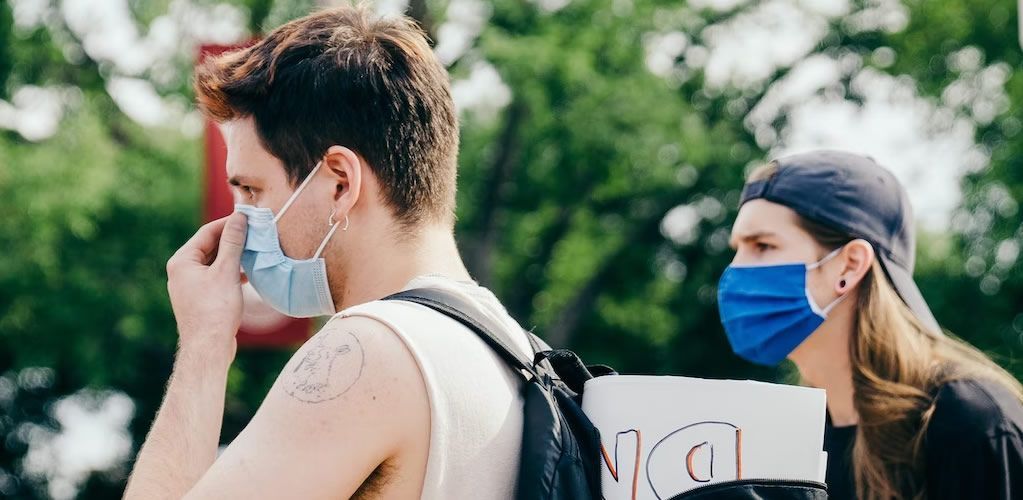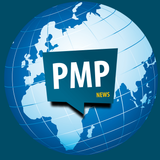WHO: New COVID-19 guidelines on masks, treatments and patient care
The World Health Organization (WHO) has updated its guidelines on mask-wearing in community settings, COVID-19 treatments, and clinical management.

The World Health Organization (WHO) has recently updated its guidelines on mask-wearing in community settings, COVID-19 treatments, and clinical management.
This review and update process is continuous, with guidelines being developed in collaboration with independent, international experts who take into account the latest available evidence and the changing epidemiology of the virus.
Masks, a key tool against COVID
WHO continues to recommend the use of masks by the public in specific situations. The health agency recommends their use irrespective of the local epidemiological situation, given the current spread of COVID-19 globally.
This includes wearing a mask “following a recent exposure to COVID-19, when someone has or suspects they have COVID-19, when someone is at high risk of severe COVID-19, and for anyone in a crowded, enclosed, or poorly ventilated space.”
While these recommendations remain the same, WHO also advises that there may be “other instances when a mask may be suggested, based on a risk assessment. Factors to consider include the local epidemiological trends or rising hospitalization levels, levels of vaccination coverage and immunity in the community, and the setting people find themselves in.”
Reduced isolation period
For those with COVID-19 symptoms, the new guidelines suggest a period of 10 days of isolation from the date of symptom onset. This is an increase from the previous recommendation of 10 days of isolation, plus at least three additional days since the symptoms had resolved.
For those who test positive for the virus but do not have any signs or symptoms, the new WHO guidelines suggest a period of 5 days of isolation, as opposed to 10 days previously. “Patients may be able to be discharged from isolation early if they test negative on an antigen-based rapid test.”
Isolating those with the virus is an important measure in preventing the spread of the virus and can be done at home or in a dedicated facility, such as a hospital or clinic.
WHO explains: “The evidence considered by the guideline development group showed that people without symptoms are much less likely to transmit the virus than those with symptoms.
“Although of very low certainty, evidence also showed that people discharged at day 5 following symptom onset risked infecting three times more people than those discharged at day 10.”
COVID-19 treatments
WHO has extended its strong recommendation for the use of nirmatrelvir-ritonavir (also known by its brand name ‘Paxlovid’) in mild or moderate COVID-19 patients who are at high risk of hospitalization.
This recommendation was first issued in April 2022 and was further strengthened in December 2022 when the first generic producer of the drug was prequalified by WHO.
“Pregnant or breastfeeding women with non-severe COVID-19 should consult with their doctor to determine whether they should take this drug, due to ‘likely benefits’ and a lack of adverse events having been reported.”
WHO has “reviewed the evidence on two other medicines, sotrovimab and casirivimab-imdevimab, and maintains strong recommendations against their use for treating COVID-19.” This is due to the fact that “these monoclonal antibody medicines lack or have diminished activity against the current circulating virus variants.”
WHO has conducted a thorough review of the evidence and has determined that these medicines are not suitable for treating COVID-19.


|

|

|
Sources
▪ Text: This piece was first published in PMP Magazine on 17-Jan-2023.
▪ Cover: Unsplash/Ian Harber. (Licensed under a Creative Commons Attribution-ShareAlike 4.0 International License.)

Read more

— The UK faces a diplomatic dilemma as Lord Peter Mandelson’s controversial appointment as ambassador to the US clashes with Trump-era tensions. His credentials impress, but political baggage risks rejection.

— Elon Musk’s self-radicalisation stems from his reliance on X’s algorithm-curated feed, which amplified far-right narratives, creating a feedback loop that entrenched his beliefs and shaped his radical political discourse.

— Your daily roundup of the front pages of the main newspapers and magazines today in the UK... and beyond.

— Elon Musk’s controversial gesture at Trump’s inauguration sparked accusations of Nazi symbolism, while Trump’s extremist policies and global provocations highlight an alarming shift towards far-right authoritarianism. The world watches anxiously.
|
|


[Read our Comments Guidelines]